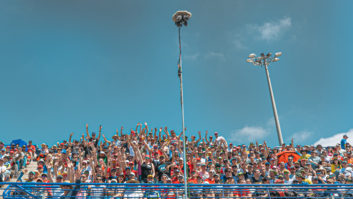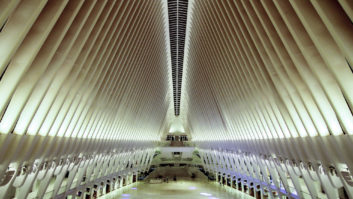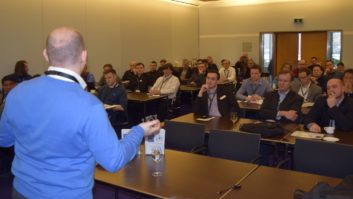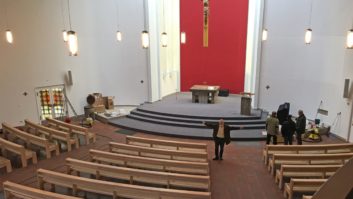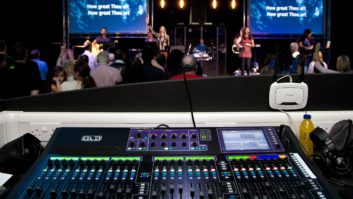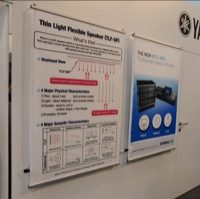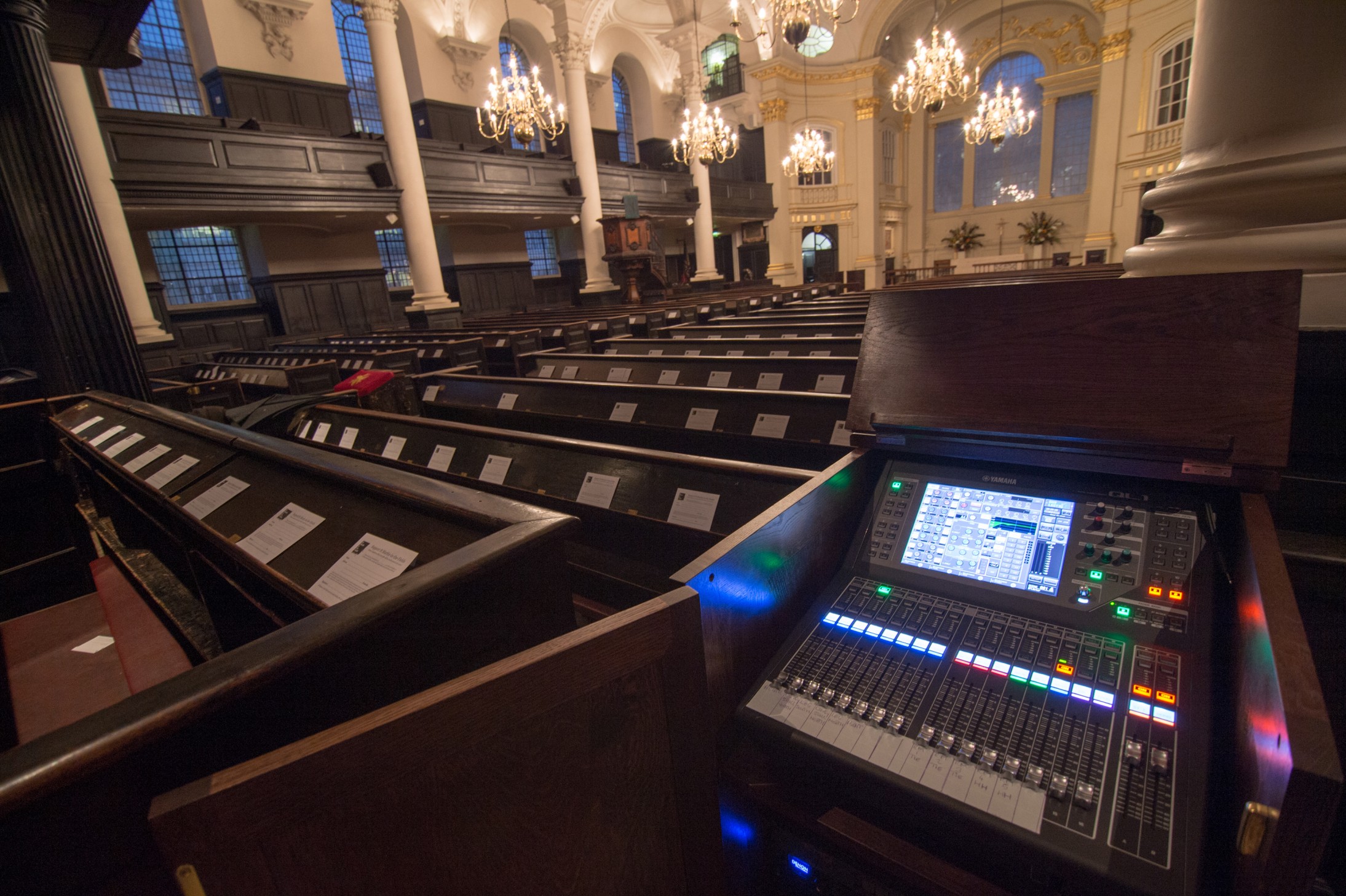
The first part of this feature on houses of worship outlined how crucial the worship market has become to the AV industry. In the second and final part we look at some of the challenges the market provides for installers such as accommodating user’s variable skill sets.
The more cost-efficient the system, the more attractive it will be
It might be suggested that this one goes without saying, but it’s worth stressing the point given that HoW projects are by their very nature susceptible to the ebb and flow of finance.
“There is a huge variance in what is affordable, and what a church feels is ‘right’ to spend on this type of equipment,” says Iain Harvey-Smith, communications director at DM Music. “But in nearly all churches, the money comes from the congregation, and they’re also the ones that make – or have a big part in making – the decisions. You need to have them in agreement that a new PA or AV system is the right use of church funds.”
And, as indicated earlier, this need to guarantee optimum value for money means that project lead times generally incline towards the protracted. “Usually a church will try to get three quotes for installation work. How do they tell the difference between them if they don’t understand the equipment? Well, often the differentiation is done by turning to the back page to look at the price,” admits Harvey-Smith.
Variable skill sets must be accommodated by user-friendly systems
There is a common perception that churches – particularly in Europe – tend to be staffed by personnel without specialist technical knowledge. But that’s certainly not always the case, as L-Acoustics’ Cédric Montrezor explains: “I think it is safe to say that there are a fair number of churches, especially in the US but also in the UK, that mount impressive and very professional musical productions each week, which means that they need the staff to help them accomplish that. I would say that the skill-set of church technical staff is more similar to that of a small concert venue, with the main difference being that a church production has a house band so perhaps less need to change or adapt the system to a different performance each night or week.”
Nonetheless, with skill-sets varying greatly from project to project, simplicity of system operation and user interface is undoubtedly a primary selling point for new technology. Karl Christmas, sales and marketing manager at Yamaha Commercial Audio, puts his finger on the main impulses at work here.
“Simplicity of user interface is a key feature,” he says. “It is only in comparatively recent years that UK churches have started to move beyond basic ‘microphone-amplifier-column speakers’ installations to contemporary sound reinforcement with full multichannel mixing facilities. Therefore, there hasn’t been time yet for a generation of churchgoers to come through with digital mixing being a regular part of church life, so an easy-to-master console is important.”
Given the unpredictable nature of end-user knowledge, the extensive provision of training is a prerequisite of success in this market. “We get involved with a lot of different events where we have the opportunity to use our systems and introduce them to lots of different groups,” says Steve Jones at d&b audiotechnik, who adds that d&b’s V, Y and E Series loudspeakers have resonated particularly well with the HoW market.
There is definitely a distinction to be drawn between the US and Europe in terms the levels of training required, but even Stateside, highly skilled end-users are far from all-pervasive. In the US, says Alan Shirley, product line manager, sound reinforcement loudspeakers at Bose, “some of the larger HoW venues that focus on contemporary Christian music as part of the worship service now employ full-time paid AV professionals to operate the sound and lighting/video systems. Many of these professionals do have formal training in audio and sound system design and operation. However, this level of AV training and skills is definitely the exception, with most churches in the US relying on volunteers, most with little or no formal AV education.”
Ivan Schwartz, TC Group western regional sales manager for install and tour, highlights the increasing training activity on the behalf of volunteers. “The volunteer crews are becoming more advanced too, with many of them attending training seminars and learning on the job from more experienced people,” he says.
More complicated installs are inevitable
Harvey-Smith outlines several trends expected to shape HoW AV over the next few years, including the continued migration from analogue to digital audio, as well as the installation of “larger, more affordable LED screens in place of projection. Also, HDMI distribution over twisted pair is now the norm, but [there are indications of a move] towards HDBaseT as a standard for distribution and some building-wide video over IP. Most of this depends on the building and requirement.”
These new requirements will call for greater automation and centralised control, particularly in those HoWs delivering a wide variety of services. “With ever-increasing demands on the technology being installed and its level of sophistication, many congregations do not have the resources to configure or adjust it for particular services, so simple control via wall panel or iPad to automate and control as much as possible are becoming commonplace,” says Harvey-Smith.
The deployment of networking technologies, particularly Dante, is also expected to make a greater impact on HoW projects over the next few years. In this context, simple control interfaces and readily available training are sure to become evermore pivotal.
Nonetheless, with the HoW market likely to remain characterised by a blend of the new and (very) old, perpetual concerns for manufacturers and installers may essentially remain unchanged – led by the need to ensure accurate audio coverage in venues that may be far from acoustically ideal.
“Even in the best rooms, it is desirable to keep acoustic energy from the speaker system off areas where people aren’t seated,” says Schwartz. “And many times the acoustical treatment is marginal due to cost constraints, architectural issues and aesthetic reasons. The result is that a properly designed system is still required” – and will presumably continue to be so long into the future – “to provide proper and even coverage throughout the seating area”.
www.bose.com
www.dbaudio.com
www.dmmusic.com
www.l-acoustics.com
www.yamahaproaudio.com

